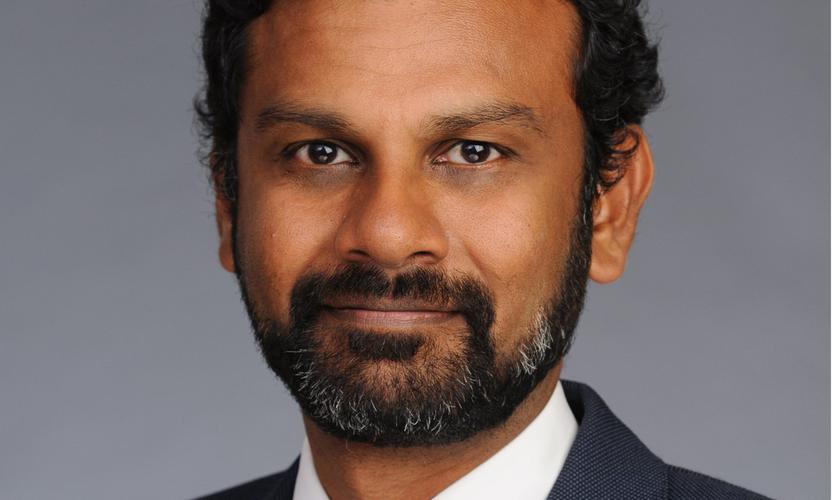Of cosmetics and antimissile systems
An investment in South Korea’s cosmetics sector might present some obvious risks, such as changing consumer preferences or competition from better established European cosmetic firms.
Then there are less obvious risks, things like rising labour costs, currency risk or potential disruption by online retailers. But in fact, the biggest drag on the Korean cosmetics sector in the past year came from an even less apparent source: geopolitical risk, in the shape of an antimissile system.
China’s opposition to South Korea hosting the “Thaad” American antimissile system triggered calls for boycotts by Chinese consumers of Korean products and a Chinese ban on selling group tours to South Korea. That led to a sharp slump in sales and stock prices at several South Korean firms, including two leading cosmetics companies.
How to think about unintended risk
The case is a poignant example of the unintended risks or implicit exposures that attach to every investment decision. These often aren’t the type of risks that would be picked up in traditional modelling; to identify them, investors need to be rigorous and proactive.
Implicit risk can include things like classification risk. Investors hoping to cash in on the recent rally in technology stocks might buy an index fund that tracks the sector, but which risks missing out on the growth in stocks like Amazon or Netflix --both of which are classified by a leading methodology not as tech stocks but as consumer discretionary companies.
Other examples include correlation to factors like oil price volatility, not just for primary producers like BP or PetroChina, but for companies that are incidentally exposed to oil price fluctuations such as airlines, or marine leasing firms. Aspects of behavioral finance, such as herding, would also constitute implicit risk exposure.
Even the current global search for yield in an era of low rates carries significant implicit risk; investors may unwittingly take on more risk than they realise in their search for reasonable yields. Such risks cannot always be avoided-- but they can be understood as part of any investment decision and, in many cases, hedged against or mitigated.
The approach to risk management obviously varies across asset classes and should be an integral part of any investment process. Below, we use a number of case studies to illustrate different unintended risks: stylistic bias in equity strategies, issues of market access for fixed income in China and how a multi asset approach to currency exposure determines portfolio positioning in emerging and developed markets. Lastly, we look at why the house always wins in Macau, the Chinese casino hub, in part by successfully adapting to unintended risks as they emerge.
Growth: too much of a good thing?
Source: Fidelity International, Thomson Reuters, January 2018.
Source: Datastream, Fidelity International, January 2018.
Past performance is not a reliable indicator of future results..
Global equity markets have seen significant swings in the relative fortunes of factors relating to growth and value in recent years. Chart 1 shows the performance of the MSCI USA Growth Index and the MSCI USA Value Index since 1995.
The years since the global financial crisis have largely favoured a stylistic bias towards growth. This was interrupted from late 2015 to late 2016, when concerns over the pace of interest rate rises and political uncertainty in the United States favoured a value-focused style.
The implicit risk to investors comes when they have an unconscious portfolio bias towards one style over the other -- this risks missing out when the opposite factor is holding sway, and their chosen style underperforms. It’s not just growth versus value but any portfolio that tilts significantly toward a stylistic bias, which could also include momentum, small cap or large cap among others. Taking on such risks needs to be a conscious decision -- so that the investor understands the performance profile they can expect to see. Or it needs to be mitigated -- owning both a growth and value set of stocks, or two different and mutually offsetting portfolios, for example.
In the example of US growth versus value, this type of risk came sharply into focus in 2017. The strong rally in technology stocks -- companies like the FAANGs (Facebook, Amazon, Apple, Netflix and Google) -- led to strong outperformance by growth-focused investing styles. Value styles, which focus on stocks with higher dividend yields and lower valuations on a price-to-earnings or price-to-book basis, have not lagged so far behind growth styles since the dotcom boom of the late 1990s.
The risk now, of course, is that the pendulum could swing back in the other direction -- perhaps not a bad time to reassess implicit stylistic bias.
China: Navigating credit markets
 China
ChinaSource: Bloomberg, Fidelity International, December 2017
For fixed income investors in Asia, one of the biggest challenges - with the largest potential rewards - has been figuring out the right approach to the Chinese credit market.
Because the market is relatively new, and access for foreign investors has historically been restricted, this often meant investing indirectly. At first, this took place through offshore US dollar-denominated or other hard currency bonds issued by Chinese companies in Hong Kong, many of them real estate developers.
Then China created a new market denominated in offshore renminbi. This so-called Dim Sum bond market has been strongest in Hong Kong but also included debt issued in centres like London, Singapore or Paris.
After several years of rapid growth, Dim Sum bond market issuance peaked in 2015 and has been declining since. This happened after China devalued the renminbi in August 2015 and adopted a more market-oriented exchange rate regime, which changed the notion that the renminbi was a one-way bet and highlighted another layer of risk for investors .
Source: Fidelity International, Bloomberg and JP Morgan, January 2018
This rapid but non-linear growth of Chinese credit markets means investors have not only had to weigh traditional considerations like interest rate risk, credit risk or currency risk, but also to focus on more implicit exposures areas such as market access risk, regulatory risk and liquidity risk.
For example, consider the risks of using proxy measures to access a market. The waning of Dim Sum bond issuance in recent years has been more than offset by the rise of China’s massive onshore bond market. Regulatory risks, such as potential shifts in currency management policy or regulations on cross-border flows of funds, could pose challenges and are often not well sign posted. Liquidity risk is another recurring theme, given that secondary transaction volumes have lagged the growth in overall issuance in Chinese credit markets. One reason is the prevalence in the onshore market of local commercial banks, which tend to be buy-and-hold investors.
Today, at just under 10 trillion US dollars, China’s onshore bond market ranks as the world’s third largest after the United States and Japan. Despite this, foreign investors still own less than 3 per cent of the onshore bonds in issue. This figure will grow -- but that growth, too, may prove to be less than smooth. Investors need to be prepared to adapt to the changing environment.
A multi-asset view: Emerging and developing markets
From a multi-asset perspective, the diversity of assets in any one portfolio calls for a broad approach to risk. The following two examples show why.
VaR: Value at risk. For illustrative purposes only. Source: Fidelity International, July 2017.
As table one shows, investors should carefully asses the risk contribution to a portfolio as they add new ideas or rotate between asset classes -- it’s not just a matter of thinking about the overall amount invested in an asset class, but bringing an awareness that even similar asset classes can have very different risk levels. Emerging market sovereign debt makes up only 7.9 per cent of this example portfolio but 49.1 per cent of the value at risk.
Emerging market debt has attractive properties as part of a multi asset portfolio and exposure can be taken either on a hard currency basis (US dollar denominated) or by targeting local currency debt. Each has different properties and risks associated with them that need to be assessed as market conditions change.
Investors can add value by rotating between the two over time but this must be done with an awareness of the changing risk dynamics this brings. Simply rotating the same portfolio weight in hard currency emerging market debt into local currency emerging market debt does not equate to the same level of risk. Emerging market local currency debt by its very nature is more volatile and can account for significantly more risk in a portfolio than hard currency debt.
For illustrative purposes only. Source: Fidelity International, Bloomberg, May 2017.
Another case where implicit currency risk emerged was the Brexit vote in 2016. Traditionally, foreign investors in a developed market like Britain might not have hedged currency exposure from equities because the currencies tend to contribute less volatility than the equity overall.
However, it seemed probable that the pound would take a hit in the event of a British vote to leave the European Union. Investors who foresaw this risk, and hedged the sterling risk in their UK equities exposure, would have been able to limit capital losses when the UK voted for Brexit. Chart four shows how this might have played out in a sample portfolio that implemented currency hedging ahead of the Brexit vote.
As a geopolitical event, the risk around the Brexit vote was forecast well in advance, but it became more prominent as the deadline for the vote drew closer and the political situation evolved. The episode offers another lesson in why it pays to constantly monitor and review investments, to ensure that the scale of implied risks has not shifted.
Macau: Capital at risk
Source: DICJ, Fidelity International, January 2018.
Operating casinos is a risky business, but the most obvious risks are also the most calculable ones. In all casino games, the house has a defined statistical advantage over players. However, for investors into the Macau casino sector, the implicit risks have been more challenging to measure.
For example, Macau’s casinos had been growing at a relentless pace for years after the financial crisis until an unexpected policy action in mainland China hit the sector’s revenue in 2014. That was when China’s official austerity campaign against corruption took hold in Macau, depressing the overall market by detaining hundreds of officials and businessmen suspected of corruption across greater China.
That scared away some of the Macau industry’s biggest players (who normally travelled from mainland China) and weighed on the shares of local and Las Vegas casino developers active in the world’s biggest casino market. At its peak, casino revenue in Macau was 7.5 times that of Las Vegas.
As a result of China’s austerity campaign, Macau’s revenue from VIPs, or wealthy high-rolling players, fell sharply in 2014 and today remains lower than it has been since at least 2010. But it prompted a recovery response from casino operators, who changed their target audience, which ended up boosting profitability across the sector.
The lesson for investors is that policy shifts are often unexpected, especially in new or emerging markets -- and can have a significant impact on the profitability and dynamics of sectors that had previously been taken for granted as part of an investment case. Again, constant monitoring and analysis will help investors to avoid these risks.
EBITDA stands for earnings before interest, taxes, depreciation and amortisation. Source: Fidelity International, Company reports, JP Morgan, January 2018.
South Korea: Two paths to responding to risk
Rebased to 100. Source: Fidelity International, Thomson Reuters, January 2018.
Source: Datastream, Fidelity International, January 2018.
Past performance is not a reliable indicator of future returns.
In South Korea, the fallout from the Thaad announcement and drop in arrivals from mainland China after the group travel ban knocked sales at both AmorePacific and LG Household & Healthcare (LG H&H), but the two South Korean cosmetics companies responded in different ways.
AmorePacific responded by trying to reduce exposure to the Korean duty free channel by using purchase limits to steer Chinese customers towards buying in China, and to hedge their reliance on China customers by trying to grow faster in new markets like Southeast Asia and the United States. But this met with mixed success and the stock remains down over 20 per cent from its 2016 peak.
By contrast, LG H&H had a lower penetration in duty free sales and was less reliant on cosmetics. It responded by trying to reduce exposure to Korean duty free channels. It focused more on its onshore China business, pushing on as usual in opening new stores and launching marketing campaigns. The company also tried to broaden revenue streams by focusing on growing their household products and beverage businesses to offset the duty free cosmetics sales slump.
As a result, LG H&H’s onshore China growth accelerated last year despite any Thaad-related impact.
By hedging across product lines and geographies, companies can better manage unintended exposures.
The point here for investors is that they need to understand the makeup of the businesses they are buying, and this is not always obvious. On-the-ground research can help shed light on hidden risks.
LG H&H was more diversified, and therefore proved to have a more robust business model when things changed. AmorePacific relied on a concentrated revenue model that was less able to adapt quickly when the external environment moved against it.
In all of the above cases of unintended exposures, careful research and ongoing monitoring was crucial to mitigating the dangers of capital loss or missed opportunity.
The point is not to avoid risk; the point is to take risk consciously, intelligently and deliberately. Investors need to look beyond the obvious in order to avoid surprises.
By doing this, investors can succeed at better managing unintended risks -- so that they can focus more clearly on the risks they intend to take.









































